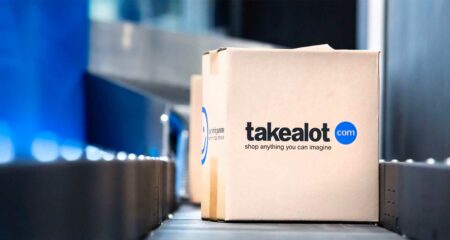
Just 10 years ago, publishing and media accounted for 89% of Naspers’s revenue. Today, 79% of its revenue is derived from e-commerce and Internet businesses — and is growing.
In future it will be close to 100%, notes Bob van Dijk in his CEO’s review, published with the group’s annual report on Friday. “This will come with the continued growth of the online businesses, new investments in technology companies and the completion of the digital transformation of our video entertainment and media businesses,” he says.
Naspers is regularly criticised for the dominant role that Chinese Internet giant Tencent plays in the business, but there is no disputing the fact that in 10 years Naspers has transformed itself from a traditional media company into a digital giant. Whether it can do so again remains to be seen. However, the company is investing heavily in businesses across all stages of the business life-cycle, with a particular focus on “new ventures”.
In particular, the group is focused on what it dubs “edtech, healthtech and agtech”. These are the sectors that Naspers believes could fuel its next wave of growth. For instance, it has recently invested US$35-million in Honor, a US-based home-care company that helps older adults live safely and comfortably in their own home by enabling reliable and high-quality care. It is also investing heavily in the online education space, upping its investments in Brainly, Udemy and Codecademy.
Brainly is a social learning platform serving more than 110 million students in more than 35 countries; Codecademy is a vocational learning platform, with 45 million people having taken courses to learn how to code; and Udemy is a global education marketplace for lifelong learners serving more than 20 million students in 190 countries.
For now, these businesses are just a blip on the financial radar, contributing $223-million in revenue, up from $134-million in the 2017 financial year. As revenues increased, so the losses widened to $155-million from $107-million the previous year.
Overall, the group’s Internet businesses (as opposed to its video entertainment and media businesses) contribute a hefty chunk of the group’s $20-billion revenue and $2.5-billion in headline earnings. Specifically, in the last financial year the Internet businesses generated $15.1-billion in revenue and $3.1-billion in trading profit.
Tencent dominance
This dominance of Tencent in the earnings mix is unlikely to change in the future and is one of the reasons why the discount between Naspers’s market capitalisation and its sum-of-the-parts valuation remains stubbornly high. Van Dijk acknowledges that this remains a source of frustration to investors. “We believe that crystallising potential together with structural actions that address the drivers of the discount will resolve this over time.”
Management is more cognisant of these concerns than it was in the past and has taken steps to unlock value in the company. For instance, it reduced its holding in Tencent by 2% and sold its stake in Indian retailer Flipkart. The funds generated were used to strengthen the balance sheet in order to invest in new initiatives. But by far and away management’s key objective is to grow e-commerce to profitability and develop the core segments (classifieds, e-retail, payments, online food delivery) into $5-billion to $10-billion-plus businesses.
This is starting to happen. It was notable that in this financial year the classifieds business OLX turned profitable and cash-flow positive — while it expanded into adjacent segments like real estate and cars. It has acquired South African platform AutoTrader, as well as Expat Wheels and Wecashanycar in the United Arab Emirates.

PayU seems poised for good growth. Online payments in emerging markets are expected to grow twice as fast as in mature markets. This is for two reasons, Naspers says. For one, there is an increasing regulatory push towards cashless payments; and there is a growing need for online cross-border payments, which are expected to be about 30% of the e-commerce volume by 2020, up from about 20% now. Against this backdrop, the payments industry saw over $40-billion of global M&A in 2017.
Naspers is also evolving PayU from a payments business into a broader fintech business. In the past year, the company launched credit products in India and Latin America, invested $99-million (and €20-million in convertible loan funding) in German fintech business Kreditech and $100-million in Remitly, a technology-driven remittance business.
Other Internet businesses are less mature but equally promising. Naspers remains convinced about the future of online food delivery, acquiring a 22% stake in Swiggy and 23% stake in Delivery Hero. Revenue in this sector was up 121% year on year.
The online retail businesses like Takealot in South Africa and eMag grew strongly, with eMag’s Romanian business becoming profitable.
In online travel, MakeMyTrip strengthened its leadership in India, delivering 94% year-on-year growth in the third quarter.
Naspers is optimistic about the future, believing that if it positions itself correctly, global macroeconomic, regulatory, technology and competitive trends could work in its favour.
The company identifies four trends as being key. Notably, global growth will continue to increase; machine learning is likely to be the next transformational computing paradigm shift; regulatory responses to the tech revolution are material; and there is a global shortage of digital talent.
This extends from software developers to product designers, machine learning and artificial intelligence specialists, cloud computing specialists, digital marketers, and digital content creators. To be successful, digital companies need to be able to attract and retain these people.
- This article was originally published on Moneyweb and is used here with permission




